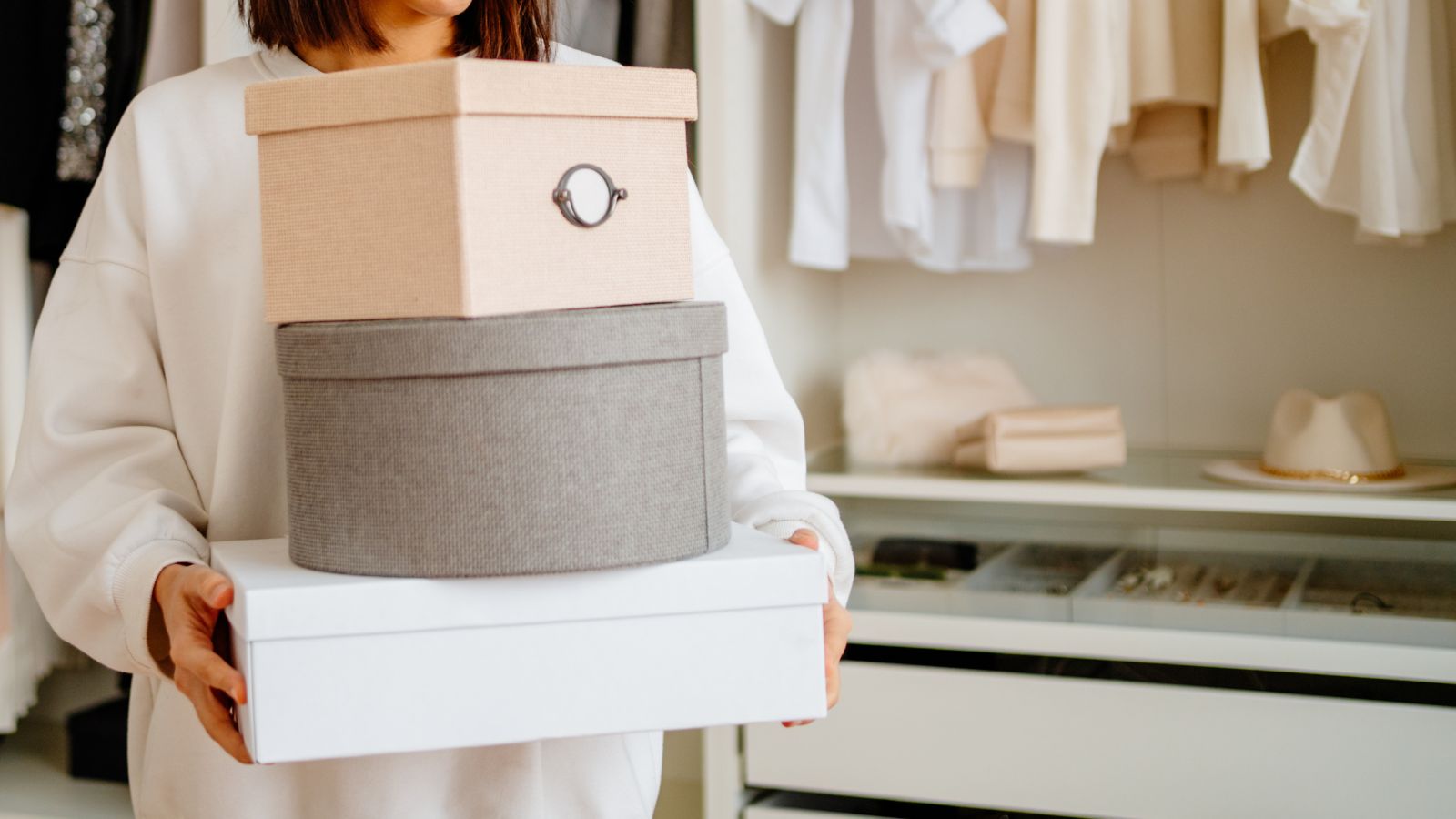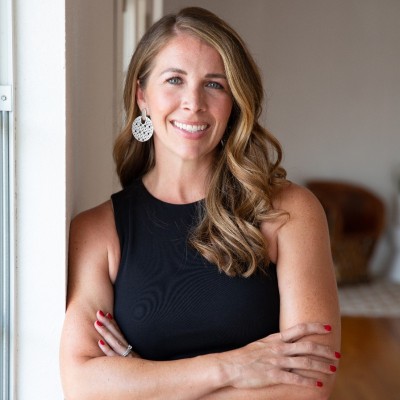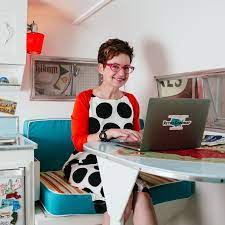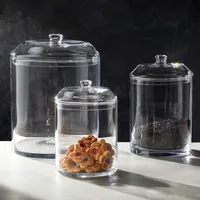How a vision board can help you declutter, according to experts
Making a vision board before you declutter can make a massive difference to the final result, experts say


The terms ‘decluttering’ and ‘tidying up’ seem simple on the surface, but when you are faced with all of your prized possessions and overflowing home storage, it can be hard to know where to start – let alone picture where you want to end up.
The simple answer to this conundrum? Creating a vision board, professional organizers say.
This is how a vision board can help you declutter, how to make one, and why it is so useful to get motivated to declutter.
How a vision board can help you declutter
Visualizing the end result is not a new decluttering tip. It is recommended by professional organizers time and time again to help you push through home clear outs and even declutter sentimental items.
That being said, it can be tricky to really imagine your end goal – this is where a physical vision board helps to direct your decluttering practices and set you up for a successful decluttering session.

‘A vision board is a visual representation of one's goals and what one wants in a particular situation. This may not work for every client, but for our clients that process things visually, this can help them to stay on track and make decisions when decluttering and organizing,’ begins Audra George, professional home organizer and owner of Pretty Neat: An Organization Solution. ‘It literally gives them a vision for their space that they can refer back to when trying to make decisions.’

Audra George has over 12 years of experience working in clients' homes. Her passion is to help others and to organize and help busy families get their spaces in order.
There are several benefits to creating a vision board before you start decluttering and cleaning, Stephanie Deininger, professional organizer and owner of The Organized Flamingo, continues. Not only does it give you smart storage ideas for organizing what you keep and inspiration for how to display it all, but it can also help you to set a budget, Stephanie says.
Design expertise in your inbox – from inspiring decorating ideas and beautiful celebrity homes to practical gardening advice and shopping round-ups.
‘This is a great tool to start budgeting what the products in the pictures will cost. Just remember that your space is unique to you, and it shouldn’t look like someone else’s, especially if their life isn’t anything like yours,’ she adds.

Stephanie has been helping businesses and people get organized for over 20 years. She is also a member of NAPO National and NAPO Colorado Chapter (National Association of Productivity & Organizing Professionals).
How to make a vision board for decluttering

Designing a vision board is not too dissimilar to making a mood board for designing your home, but instead of pulling together pictures of fabrics and cabinets, you are pulling together images of tidy, organized homes that can help motivate you to clean and declutter.
1. Decide if you want a physical or digital board
The most important part of making a vision board is ensuring that you look at it; otherwise, it is a waste of time.
For some people, making a physical board or printing one out and hanging it where they are decluttering or organizing can be helpful. For others, making a digital board and using it as their phone wallpaper is simpler.
No matter which approach you pick, they can both be equally as motivating, says Beth Lennon, professional organizer and owner of Destination Decluttered: ‘‘Digital vision boards or old fashioned collages of collected photos are a great way to keep your eyes on the prize, and focus on the “why” of the decluttering process, not just the process itself.’

Decluttering Life Coach, Beth Lennon, was raised in a home of collectors, antiquers, savers and creatives, with ADHD thrown into the mix. She knows the thrill of the hunt or a bargain, and also knows how overwhelming it feels to be surrounded by too much unorganized stuff that makes it hard to focus or find anything.
2. Keep it simple
You do not want making a vision board to take longer than the process of decluttering itself, warns organizer Audra George. She suggests starting by writing out goals and then finding pictures that represent what you want your space to look like. ‘Don't overthink it,’ she urges.
‘Then, set a certain timeframe to get your dreams and goals together,’ she recommends. ‘Don't let this bog you down, delaying the actual decluttering and organizing.’
3. Pick images you feel naturally drawn to
As with designing a home that feels like you, you want to pick out images of organized or tidy spaces that you are naturally drawn to. Don’t think too hard about why you like each image, just save them. More often than not, you will find a subconscious theme.
‘Selecting inspiring photos to pin on a vision board also helps them to connect with who they are during this chapter of their life, keep focused on their ideal future vision, and get a better understanding of what from their past may no longer fit into the life they want,’ explains Beth Lennon, professional organizer.
Once you have collected all of your images, pick out the themes. You might notice a lot of closets organized by color or clothing category, certain types of storage baskets, or kitchens with uniform glass jars for decanting food goods. These can then help inform your goals and motivate you to get started.
Snack Glass Canisters: View at C2B
These handblown containers are exactly the kind of aspirational storage you may find on your vision board. They are available in various sizes and are a contemporary twist on a pantry essential.

4. Refer back to the board as you work
The board is useless if you look at it once and then don't look at it again until after you have done, warns Audra George, home organizer. Instead, you should focus on it throughout the process, helping you to make more informed decisions.
‘When decluttering, ask yourself if you should keep or eliminate the particular item. Does the item in question bring you closer or farther away from your vision and goals? As you declutter, it will become clear exactly what space you have and how to implement your goals in your particular space.
‘Remember that things never end up exactly like in a magazine. Function is key in a real space.’
FAQs
What is the psychology behind vision boards?
Vision boards are excellent visualization tools that can help inspire you to reach a goal. Putting a vision board somewhere we see it regularly offers a constant subconscious reminder of what we are working towards, boosting motivation and making you more open to opportunities that arise that can help towards that goal.
How often should you look at a vision board?
Ideally, for a vision board to have the desired motivating effect, it needs to be somewhere you can see it at least once a day. This could be in a physical space, such as on your office desk, bedroom, or kitchen, or a digital device, such as your phone or computer background.
‘A vision board can be a great tool to use for decluttering as long as it’s used as inspiration and not a comparison visual,’ home organizer Stephanie Deininger concludes. One of the most valuable decluttering lessons to pick up on is that every space is personal, and a lived-in home will never be spotless.
You can even use a mood board to help motivate you to clean, if you need an extra boost.

Chiana has been at Homes & Gardens for two years and is our resident 'queen' of non-toxic living. She spends most of her time producing content for the Solved section of the website, helping readers get the most out of their homes through clever decluttering, cleaning, and tidying tips. She was named one of Fixr's top home improvement journalists in 2024.
